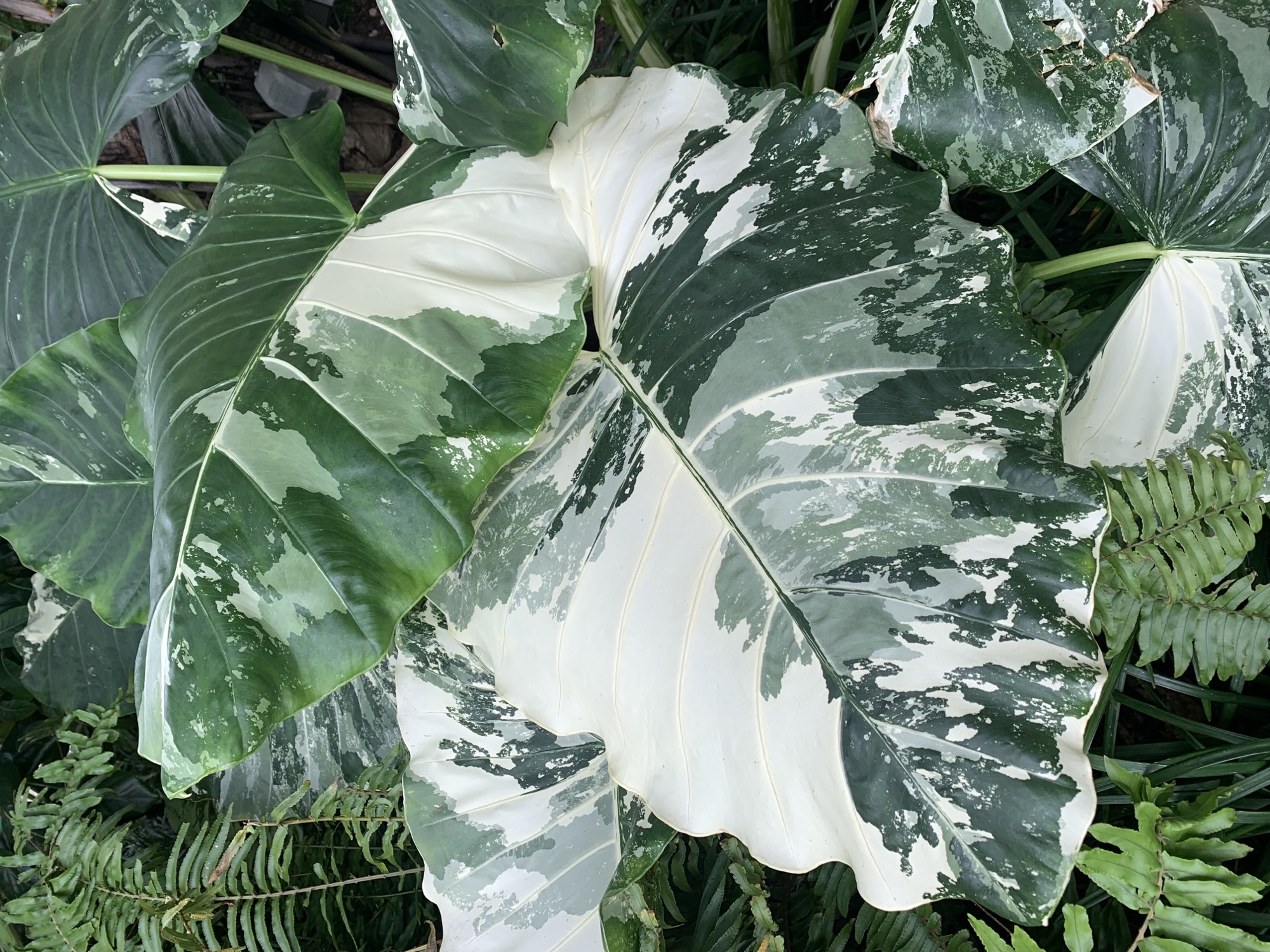
With March being symbolic of St. Patrick’s Day — and therefore all things green — have you ever sat back and thought to yourself, “Why are plants green?”
The answer is simple and one you’ve probably heard before, but likely don’t think about every day. Plants get their green colour from a pigment called chlorophyll; and the same way chlorophyll makes plants green, a lack of chlorophyll causes them not to be green. In horticulture, this is referred to as variegation. Variegation in plants can be naturally occurring or caused by a virus, or the plant material can be bred to grow and appear a certain way.
Since we know from a 2019 Focus on Flora article on elephant ears that the genera Colocasia and Alocasia technically share the same common name, it would be difficult to describe this rare plant without using the full scientific name Alocasia macrorrhizos 'Variegata.' This beautiful elephant ear graces the beds in front of the Cinema at Camana Bay and is a somewhat predictable grower with perfect placement in just the right amount of partial sun. Loving a well-draining, yet rich soil, the variegated elephant ear won’t give you any bright flowers to look at, but it will certainly surprise you with every new leaf that emerges.
This plant has been genetically bred to look the way it does, and is also referred to as an unstable chimera, a result of a cell mutation in breeding. Once you delve into the world of plants and horticulture, you begin to realise the possibilities are nearly endless. Plant breeders work primarily in a lab to come up with new and exciting varieties of your favorite plant material, and yes, it is a full-time job. Because Alocasia macrorrhizos 'Variegata' is an unstable chimera, this means propagating it and getting the same result or similar is a roll of the dice.
In stable genetic breeding, taking a pup or seed from a mother plant and propagating it will give you the exact same plant, but unstable means you may get the same, similar or a completely different looking plant (still the same genus). The variegated elephant ear will therefore have differed colouration from leaf to leaf. This is an indication of the amount of chlorophyll, and this in turn will affect the plant’s growth habit as we know that chlorophyll is needed for the plant to convert sunlight into energy.
Armed with this knowledge, it is easy to deduce that plants with this type of variegation are going to be less vigorous than their non-variegated friends, and this can be considered for their placement in the garden, and their companion plantings. It is possible for a variegated plant to revert to green and lose its variegation. Should this happen, simply trim off the leaves that are most green, and try giving it a little more sunlight.
This article was originally featured in the March 2023 print edition of Camana Bay Times.